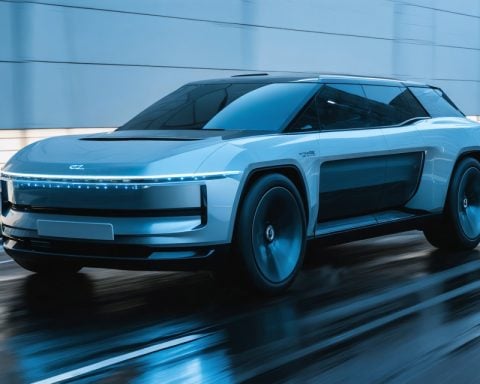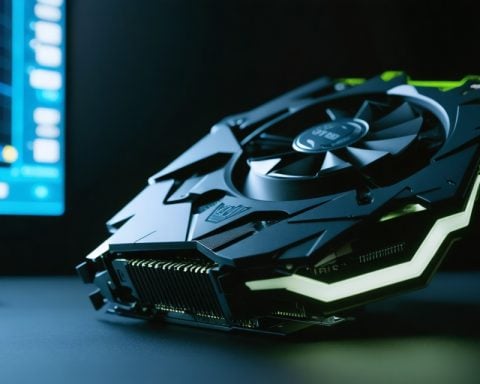- Volkswagen partners with CATL, a leader in lithium-ion technology, to expand its electric vehicle offerings.
- The alliance focuses on developing high-performance, cost-effective custom batteries for the Chinese market.
- Collaboration includes battery recycling and vehicle-to-grid power systems, promoting sustainability.
- CATL’s extensive capabilities include 13 factories and six research hubs, driving innovation for longer driving ranges.
- Volkswagen plans to launch an affordable entry-level electric vehicle by 2027.
- The partnership aims to make e-mobility a compelling option for all, contributing to a cleaner future in transportation.
Amidst the electric hum of innovation, Volkswagen is steering into a greener horizon, fueled by a strategic alliance with China-based powerhouse CATL. This partnership heralds a new chapter in the electric vehicle saga, one that promises to charge up Volkswagen’s mission with unparalleled energy.
The partnership, anchored by a letter of intent, charts an electrifying course across the Chinese market. By combining forces, Volkswagen and CATL set the stage for the creation of custom batteries, designed to offer higher performance while keeping costs in check. The scope of this collaboration extends beyond mere battery creation; it ventures into the realms of battery recycling and innovative vehicle-to-grid power systems, painting a vivid picture of a sustainable future.
CATL, the titan of lithium-ion technology, brings to the table a dazzling array of capabilities with its sprawling network of 13 factories and six research hubs. The company, with its relentless drive for innovation, paves the way for ultra-long driving ranges, ensuring that Volkswagen’s electrified chariots can glide effortlessly over landscapes.
Last year, Volkswagen electrified over 383,000 adventures on roads worldwide, but this is just the opening act. The roadmap leads to a bold vision where e-mobility becomes an irresistible choice for all, promising an entry-level EV by 2027 that whispers affordability in every silent glide.
As the world spins towards a more sustainable axis, Volkswagen’s alliance with CATL invites us to envision a future where cars not only traverse roads but also transform them. This partnership signifies more than just an agreement; it’s a leap towards a cleaner, electrified tomorrow.
Is Volkswagen’s New Partnership a Game-Changer for Electric Vehicles?
How Does Volkswagen’s Strategic Partnership with CATL Enhance Electric Vehicle Performance?
Volkswagen’s strategic partnership with CATL (Contemporary Amperex Technology Co. Limited) represents a significant evolution in the electric vehicle (EV) landscape. By leveraging CATL’s expertise in lithium-ion technology, Volkswagen aims to produce custom batteries that could offer ultra-long driving ranges at a competitive price point. This innovation addresses one of the main challenges in the EV market: increasing range while maintaining affordability.
Real-World Use Cases: How This Partnership Could Impact Everyday Driving
These advancements will likely:
1. Boost Range Confidence: The advanced batteries promise longer range, reducing range anxiety for consumers.
2. Offer More Affordable EVs: By 2027, Volkswagen plans to introduce an entry-level EV, making electric cars more accessible to a broader audience.
3. Enhance Sustainability: The partnership includes plans for battery recycling, which can significantly reduce the environmental footprint of EVs over their lifecycle.
Market Forecasts & Industry Trends
The collaboration aligns with global trends emphasizing sustainability and reduces dependency on fossil fuels. According to a report by BloombergNEF, global EV sales are predicted to reach 60% of the market share by 2040. Volkswagen’s commitment to green innovation positions it competitively within this growing market.
Features, Specs & Pricing: What Can Consumers Expect?
While details on specific battery features continue to develop, consumers can anticipate:
– Extended Battery Life: Thanks to CATL’s cutting-edge technology.
– Improved Charging Infrastructure: Through vehicle-to-grid systems that could allow EVs to supply power back to the electrical grid.
– Competitive Pricing Models: Aimed at offering high performance at lower costs, making EVs more financially accessible.
Reviews & Comparisons: How Does This Collaboration Stack Up?
Comparatively, CATL-powered batteries are positioned to rival Tesla’s stronghold in battery efficiency and longevity. Volkswagen, with its broad manufacturing expertise, can scale production effectively, potentially allowing for quicker market penetration than newer entrants.
Controversies & Limitations
Although promising, one challenge could be the dependency on raw materials such as lithium, which may be subject to market volatility and ethical sourcing concerns. Additionally, geopolitical dynamics with China must be carefully managed to ensure stable collaboration over the long term.
Insights & Predictions for the Future of E-Mobility
Experts predict that Volkswagen’s partnership with CATL could set a precedent for future alliances between automakers and battery manufacturers, as companies strive to integrate vertically to optimize supply chains and reduce costs. The focus on vehicle-to-grid technology could also revolutionize energy management within smart cities.
Actionable Recommendations and Quick Tips
1. Stay Informed: Keep up-to-date with Volkswagen’s announcements on new model releases and pricing to understand potential purchase opportunities.
2. Consider Long-Term Savings: Evaluate not just the sticker price but the long-term benefits of owning an EV, including savings on fuel and maintenance.
3. Explore Incentives: Investigate government incentives or rebates for EV purchases, which can further lower the overall cost of ownership.
For those interested in sustainability in the automotive industry, Volkswagen’s green initiatives reveal an exciting trajectory for the future of transportation.
For more information on Volkswagen’s innovations in the automotive industry, visit the Volkswagen website.



















